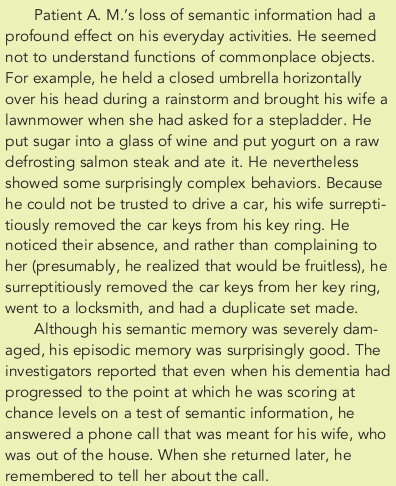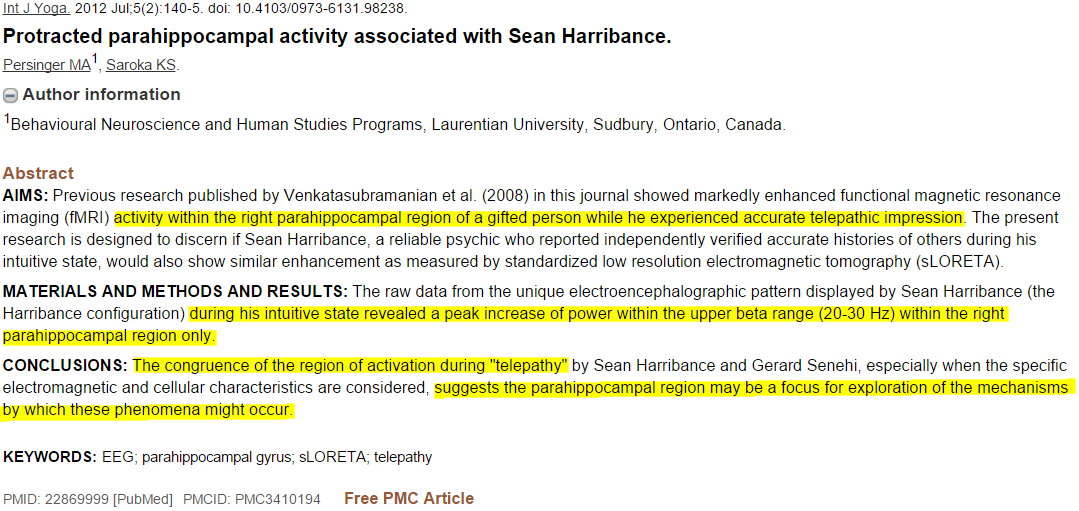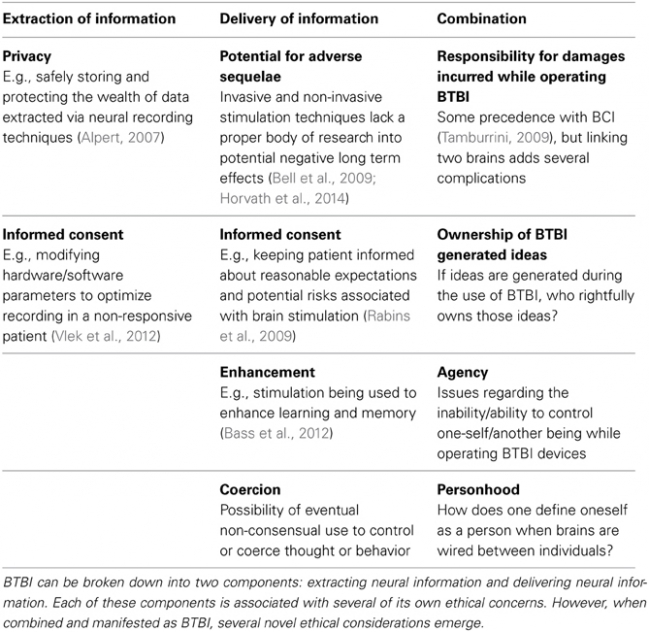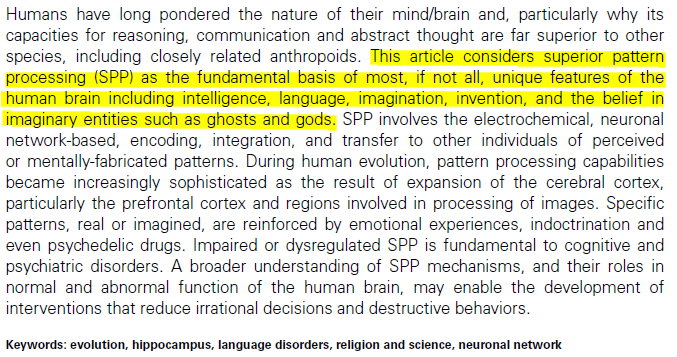Q: "Mental Telepathy? ..." (Part II)
Part I, the history of the turbulent beginnings and continued relationship of psychology and psychical research, can be read by clicking the link.
Part II concerns where we are now. And because what follows is recent enough that a historical perspective or light cannot yet be shone upon it, several examples will have to suffice. In all of these, parts of the "evidence" offered may be dismissed, but perhaps some parts kept, in our search for a common thread, and more importantly, tools that serve us in meeting The Challenge.
Part II begins with this link to a style of medical practice, which the participants introduced by Part I would have shuddered at. At a minimum, hoping that such charlatanism would never have come into being. Yet here we are. Here it is. It exists. It is now embraced by a major University's Medical Center and System. It is not only, not charlatanism, but it works for it's patients/ clients/ participants (select your favorite term for those seeking compassionate care). Imagine: a Center for Integrative Medicine.
Recall that the introductory subject was "telepathy," and that the overarching or foundational subject is: Send(ing)ThemPeace.
So, ... what do we use to meet The Challenge? Our brains. Some will argue quickly: "No! We let our brains go to sleep and use our hearts. Our hearts send and receive compassion!" While appreciating the sentiment, instructions like: "Quiet your thoughts. Rest in the Present. Focus on your breathing and mantra," would seem to involve the brain at least just a little bit for starters. And in fact involving the brain probably even longer than initial phases of sitting (zazen), as one gets locked in (in a good sense), to one's practice.
Is it important to know how the brain works,
understanding functional characteristics of thinking, to be able to meet The Challenge?
Perhaps not, on the one hand. On the other, applying anything learned about how the brain perceives, decodes, and processes during The Challenge,... might be of use, so why risk losing that possibility?
Have a look at this video, to quickly and painlessly learn just a bit more, about how the brain thinks. Usually without realizing it, as we get up, yawn, go brush our teeth and move into our day, the brain is taking in information, but not always using the systems or methods we thought to, well,... think :
Let's do a bit more observation :
1. A man known for demonstrated telepathic abilities, (done professionally) is placed in a functional MRI scanner, and a telepathy task is defined and carried out. It is controlled with scans of a non-telepathic subject, who does the same task. The goal in this article is not to quickly offer this as proof, in answer to the question posed in Part I and here above that "telepathy exists," nor, "yes, I believe in telepathy." It is instead to simply observe, and collect what is useful for The Challenge. The test: a person draws something, witnessed by two others. The telepathist, in the scanner in another room, is asked to draw what was drawn. He does: Very accurately or close to the original. The (non-telepathist) person serving as a control, tries and fails miserably. Both subjects undergo a functional MRI scan during all this. In the telepathist, a region of the brain called the parahippocampal gyrus "lights up" prominently on the scan. A completely different region "lights up" in the control brain. (See images below). In a separate but similar study, done of a second telephathist, again recognized for his abilities, the same parahippocampal region "lights up" prominently. The abstract of these experiments is given here :
Here is a gallery with the various images from these studies :
So right away, this observation prompts many questions:
- Was the science good? Not bad, though some object that the "non-telepathist" control might have had some unknown telepathic skills.
- Of course: "How does he do that?" The telepathist can do this repeatedly, but says he doesn't know exactly how he does it.
- Since telepathy is the ending or receiving of thoughts from another being in the absence of sensory input, the focus shifts quickly to,... "Gee, that's a pretty good trick. Could I learn how to do that? Could knowing how to do that help me send compassion to other individuals during The Challenge?" Wouldn't that be interesting and perhaps useful?
- "Say, what does that parahippocampal region that "lights up" during telepathy, do anyway? I mean, ... usually?"
So let's look more closely at the parahippocampal gyrus (PHG) region of the brain. In the above experiment, it is the non-dominant PHG which is activated. The telepathist is right handed. His brain's "dominant hemisphere" is the left one. The non-dominant PHG is on the right side of his brain. Here is a gallery of pictures of the PHG (there will not be a test to follow). Do what with these images? Just have a look. Neuroanatomists first gave names to brain regions based on how they looked. This while having absolutely no idea, I mean, not a clue, ... what a given named region did. On the brain surface, the "bumps" are Gyri, singular Gyrus. The ravines between gyri are Sulci, singular Sulcus. Let's have a look:
Now that you've seen it, what does the parahippocampus do? Even as recently as 1976, when my professor of Neuroanatomy would explain how a given gyrus had come to be named, knowing what it did was beyond him. So the parahippocampal gyrus, of course, means "one of the circular bumps on the brain surface (gyrus) that is located right next to (para) that other bump that looks like a seahorse (hippocampus)." Dr. Johnson rarely forgot to add, his hands in the air: "Why? ... we do not know." It did not take long for our class to learn to anticipate and repeat this phrase in unison, à haute voix, though that answer never seemed to suffice on the exam.
Brain function was first studied by neurologists and neurophysiologists in the setting of brain injured beings (humans by accidents or illness, and usually rats or mice, but also others, intentionally injured in the lab).

Examples of how loss of a specific region of the brain (assuming a non-lethal accident of course), can produce amazing (and let's not forget to include, sad...) results in human behavior and faculties,.... have been collected by Oliver Sacks, MD in his book: "The Man Who Mistook His Wife for His Hat." One example out of many, you can read here in the account at right. As students, someone would eventually, invariably ask: "What is the treatment for that?" And the professor's answer was almost invariably: "Not a thing. There is no treatment. Let's move on." And thanking the patient, we moved on. And if the professor's answer seemed to some to lack compassion, he still remained courageously in this difficult field of medicine, caring for those with often catastrophic results of accidents and illness, and had learned to not waste his compassion, saving energy instead for those where infrequently, treatment was possible. My thought at the time was that the untreatable patient still needed and merited compassion as well, done however one could. But we moved on.
So if telepathists "turn on" their non-dominant parahippocampal gyrus, what is it doing, even if they don't know it at the time? If a patient "loses" this region of the brain through a very localized stroke (loss of blood supply), what is the result? Fortunately, waiting for an illness or injury to knock out an area of brain and its function, as a means of learning more, has been one upped as a learning tool. PET (positron emission tomography) scans and functional MRI (fMRI) have added immensely to structure-function-location studies of the brain and human cognition.
Luzzi (2000) reported a man who had a non-dominant (right-sided in the brain) loss of the parahippocampal gyrus. The patient lost his ability to find his way around a new environment. Lesions produced in rats create the same result. So visuo-spatial processing is now out of whack. But in other patients, in addition to getting lost, episodic memory was also affected or completely wiped out. Episodic memory is the memory of autobiographical events (times, places, associated emotions, and other contextual who, what, when, where, why knowledge) that can be explicitly stated. It is the collection of past personal experiences that occurred at a particular time and place. One might ask: "How, or why, do these two functions go together." The PHG seems to be involved in many different functions and to act in concert with many other regions to accomplish those functions. Its physical location, places it not in that outer and more recently enlarged cortex, but deep within the brain. This is where neurons that assure functions essential to life since we crawled out of the swamp, are conserved and protected. A lizard, a mouse, an ape, a human, (and anatomical comparisons should be made with caution),... all have a PHG hidden deep, deep inside. And while it may seem uniform on its surface, the PHG can be divided into different zones of neuronal function. Some respond to visual stimuli, some odor stimuli, and some auditory stimuli, taking part in emotional reactions to these stimuli as well.
Here are quotes from an article (Aminoff et al., 2013) that you can download as PDF by clicking the link. In what follows PHG is also abbreviated PHC, parahippocampus.
Of course, none of this explains what the telepathist is doing. But it does suggest that science is now more closely interested, and quite objectively so. Has an era, and this beyond mutual tolerance, of cooperation emerged between still unexplained psychical phenomenon, psychology, and other disciplines of brain science?
Next observation...
You recall perhaps, an article written here on monkeys, who used their minds to move things in space. The researcher responsible for those monkeys, (Miguel Nicolelis) who's goal is primarily independent movement for paraplegics by transducing their thoughts into movement of sensor-equipped exoskeletons, ... These are Brain-Machine Interfaces. This neuroengineer also mentions another term: brain-to-brain communication (B2B). Does that sound like telepathy?
While still a distant reality apart from exciting but rudimentary laboratory experiments, B2B is close enough to be causing effects and repercussions. Researchers like Bernard Perbal and others concerned with its development, are starting to formulate approaches to address the ethical issues of B2B. While this is referred to with astronaut words like : "a giant step for mankind," the possibility of harm coming out of this Pandora's Box is also presented as being very real.
Quoting Perbal:
JB Trimper et al. share similar concerns about Brain-To-Brain Interfaces, as summarized here in the Conclusion of their paper, "When I Become We."
Their concerns are summarized in the following table:
Such concens would not be voiced for long, nor carefully thought through and organized, if the transition to BTBI, rather then being sensed as real, present, or imminent, was felt instead to be a century away.
Can The Challenge here at SendThemPeace.com be viewed as a Brain-To-Brain Interface? Imagine: 5,000 individuals, applying a still evolving methodology to send a message of Compassion and Peace to a soldier half-way around the world that intends : "put down your automatic weapon. Go home. You are needed there." ... and he does. Is that a collective Brain-To-Brain Interface, and are there ethical concerns? Some would respond: "Oh, just do your 20 minute meditation, and don't worry about it."
Again, the real point here is to point out that the past attitude (see Part I) of psychology and its science towards consciousness and "psi" phenomenon, represented here by "telepathy" but also including phenomenon like "Distant Healing," now seem to have the full attention of Science as entities to be fully accepted, understood and mastered.
We are living a quite impressive time of scientific transition, shift, evolution.
Next Observation
The apparently evolved attitude of mainstream science, at least currently, will not always present conclusions that fit perfectly, nor easily, with what "Spirituality" has "known for centuries," and as expressed in various traditions. Nevertheless, if one can, as advised above, extract what is useful for our goal here in meeting The Challenge, all the better. Avoiding a reversal of prior bias and scientific bigotry, avoids also throwing out the baby with the bathwater.
Here is an example: Superior Pattern Processing is the essence of the evolved human brain (Matk P. Mattson - Laboratory of Neurosciences - NIH Biomedical Research Center)
The abstract is in itself intriguing, and invites already, reaction to what is being advanced:
The above article certainly merits being read. Some will find certain conclusions (such as the existence of "God" as one example of magical thinking, with elements indestinguishable from certain psychiatric illnesses, and contributing to much of humanity's current difficulties ...), as difficult to to find value in. Other observations, such as the great importance of powerful emotional experiences as effective contributors to the process of superior pattern processing and everything that goes with it such as intelligence, imagination and invention, ... will be more potentially useful. Unfortunately, Mattson throws out beauty with his selected example of William Blake's art as magical "God" thinkiing, which he takes as yet another example of psychiatric disorder. Even if at the time this was published, Mattson had not discovered how to identify Spirit in himself and others, one can certainly hope that this can still change with time. Here we'll simply underline : emotional experiences as effective contributors to awareness becoming thought, becoming action.
He includes telepathy in that same list of imagined reality arising from magical thinking. Many of his contemporaries would not be in agreement.
And his inclusion of the importance of emotion as an essential component of our methodology here, is seconded below :
Positive Emotions, Spirituality and the Practice of Psychiatry
*Professor of Psychiatry, Harvard Medical School, USA
Brigham and Women's Hospital, 1249 Boylston Street, 3rd Floor, Boston, MA 02215 USA
ABSTRACT

Last Observation
(at least in this article!)
Some current authors do manage a less harsh rapprochement of the Scientific and Spiritual Realms.
"Intuitive Intelligence, Self-regulation, and Lifting Consciousness"
Rollin McCraty, PhD, United States; Maria Zayas, EdD, United States
... provides one such example. I think you will enjoy reading this work. And if time, here by the same authors is an offering on The Global Coherence Initiative. It makes for compelling reading as well.
Here is their conclusion :
"The studies demonstrating that a relatively small number of the population who are intentionally meditating to create positive benefits supports the hypothesis that humanity is connected via a global field. Hence, we believe that the scientific research investigating how we are both impacted by the earth’s energetic fields and the potential for detecting effects of collective human emotion and intention in the field environment is an important aspect of the GCIs goals.
However, even if we are not able to prove the encoding of human intention in the global fields in the next few years, we are confident that we can facilitate a deeper understanding of the mechanisms by which human health and behaviors are modulated by the earth’s fields and further clarify which aspects of the field environment mediate the varied and specific effects. More important is GCI’s primary goal, which is to motivate more people to work together in a more coherent and collaborative manner to increase harmony in the collective consciousness to alleviate social conflicts and to improve the environmental impact we have on the planet and assist in planetary evolution.
Seems like we have here come full circle,
and returned to SendThemPeace.com and The Challenge.



